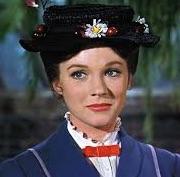February 20, 2015
In honor (recognition? deference? capitulation?) to this Sunday’s 87th annual Academy Awards, I want to take a look at the category of “Best Picture.” There are eight nominees this year–American Sniper, Birdman or (The Unexpected Virtue of Ignorance), Boyhood, The Grand Budapest Hotel, The Imitation Game, Selma, The Theory of Everything, and Whiplash—and (in spite of the contention that Hollywood only makes superhero movies these days) they represent a crazy variety of subjects: a has-been actor goes through a mid-life crisis (Birdman); the Reverend Martin Luther King, Jr. leads a coalition of African American citizens demanding their civil rights in 1960s Alabama (Selma); a boy grows up before our eyes over the course of 12 years in contemporary Texas (Boyhood ); a Navy SEAL specialist experiences violence and trauma serving in the Iraq war (American Sniper); a young Indian refugee comes of age working as a bellhop in an elegant central European hotel in the years leading up to World War II (The Grand Budapest Hotel); a music student’s dedication and well-being is challenged by the worst teacher in the world (Whiplash). Plus two biographical pictures about 20th century British academic geniuses: (The Imitation Game and The Theory of Everything). The one way these diverse movies do correspond to a continuing and depressing trend is that none of them feature a girl or woman as the central character.
Since the Oscars started in the late 1920s, the category has changed names several times, from “Outstanding Picture” to “Outstanding Motion Picture” to today’s succinct “Best Picture.” But what does “Best Picture” really mean? The Oscars were originated, in part, both to recognize outstanding achievement in mainstream movie making and to allow Hollywood to define for the movie going public just what “outstanding achievement” should mean. Interestingly for a business predicated on box office receipts and the bottom line, the “Best Picture” has not necessarily meant the “Most Popular” movie. For the movie industry, the Oscars is a chance to promote the idea that movies are not just disposable entertainment but that they are (or can be) a significant art form, an idea that in itself is a powerful marketing tool, allowing those of us who are movie fans to consider ourselves connoisseurs, devotees of screen experiences that aren’t just fun but may even be “good for us.” So what does all this tell us about what a “good” movie is? We all have our own lists of movies that we personally enjoy, but the world is equally full of lists (and listicles) proclaiming “The American Film Institute’s 100 Greatest American Movies of All Time” to the “100 Greatest Horror Films of All Time, suggesting the possibility that we can all agree about what a “good movie” is on some fundamental level.
In his book, Pictures at a Revolution: 5 Movies and the Birth of the New Hollywood, Mark Harris looks at the five Best Picture nominees for 1967 as a way of talking about the dramatic changes and audience taste in the 1960s that paved the way for the New Hollywood movies of the 1970s. In contrasting movies like the big budget, three-hour-long musical Dr. Doolittle or the comedy Guess Who’s Coming to Dinner? that self-consciously presented itself as an “important” movie dealing with a “controversial” issue (an interracial couple) with the French New Wave-inspired and graphically violent gangster movie Bonnie and Clyde and the deadpan satire of The Graduate, Harris describes the Hollywood establishment coming to grips with a young audience and a youth culture that was challenging norms of what was considered respectable and what shocking, of what was considered “high art” and what was “trash.” Many old-timers in Hollywood were shocked when Bonnie and Clyde, a movie they thought of as crude, lurid, and even immoral, was a huge box office hit. To them, Bonnie and Clyde was not a “good” movie in any sense of the word.
Just three years earlier in 1964, the Best Picture category presented an even more stark example of how differently the idea of “a good movie” can operate. In that year, both Walt Disney’s Mary Poppins, a musical adaptation of the classic children’s books featuring a mix of live action and animation and starring Julie Andrews, and Dr. Strangelove or: How I Learned to Stop Worrying and Love the Bomb, the director Stanley Kubrick’s ultra-dark and ultra-cynical satire of the Cold War, were both nominated. Mary Poppins ends with the title character flying off with her magic umbrella, having restored harmony and love to the Banks family. Dr. Strangelove ends with the literal end of the world, a montage of mushroom clouds accompanied by Vera Lynn singing “We’ll Meet Again.”
Both movies feature comedy. In Mary Poppins, the comedy is whimsical (and also more than a bit reliant on gender stereotypes), suggesting that laughter and song can resolve any negative feelings:
In Dr. Strangelove, the comedy is caustic and bitter, suggesting that the men who hold the fate of the world in their hands are motivated by vanity, petulance, and a thirst for power:
Are Mary Poppins and Dr. Strangelove both “good” movies? Personally, I would say so. I certainly enjoyed and continue to enjoy them both, and I’m certainly not alone. But many people who love Mary Poppins may find Dr. Strangelove off-putting or simply boring. And many Dr. Strangelove fans might consider Mary Poppins as insipid and childish. Even those who enjoy both movies would probably see them as very different kind of screen experiences. So what do they share in common that we could agree is an empirical marker of “good” moviemaking? That they are both, for the most part, in focus? But is focus in and of itself always good? Their success, their placement on the list for Best Picture in the same year, can be seen as reflecting that a significant number of movie goers, and, especially when we’re talking about the Oscars, movie goers who were able to vote for the Academy Award nominees, enjoyed their screen experience of both movies. Fifty years later, there are still significant numbers of people who enjoy both screen experiences, even as those experiences themselves are influenced by a half-century of people recommending and arguing about these movies. (Incidentally, the Best Picture winner for that year was My Fair Lady. Speaking personally, I’ve wound up watching both Mary Poppins and Dr. Strangelove far more often since than My Fair Lady).
Figuring out how to classify any cultural object as “good” is a central challenge of all cultural history, from literature to visual art to music to the movies. To what extent does “good” refer to time-tested qualities of aesthetic merit, and to what extent ingrained prejudices and biases? Is “good” synonymous with influential? Popular? Or can “good” refer to movies little noticed in their time but that have grown in interest over the years? As we watch the Oscars on Sunday, we can use our study of American movie history to argue about which movie “deserves” to win, and which movies we’ll still be watching in five years, or ten years, or fifty years. Maybe we can just say that a good movie is any movie like Mary Poppins. Or Dr. Strangelove. Or anything in between!

